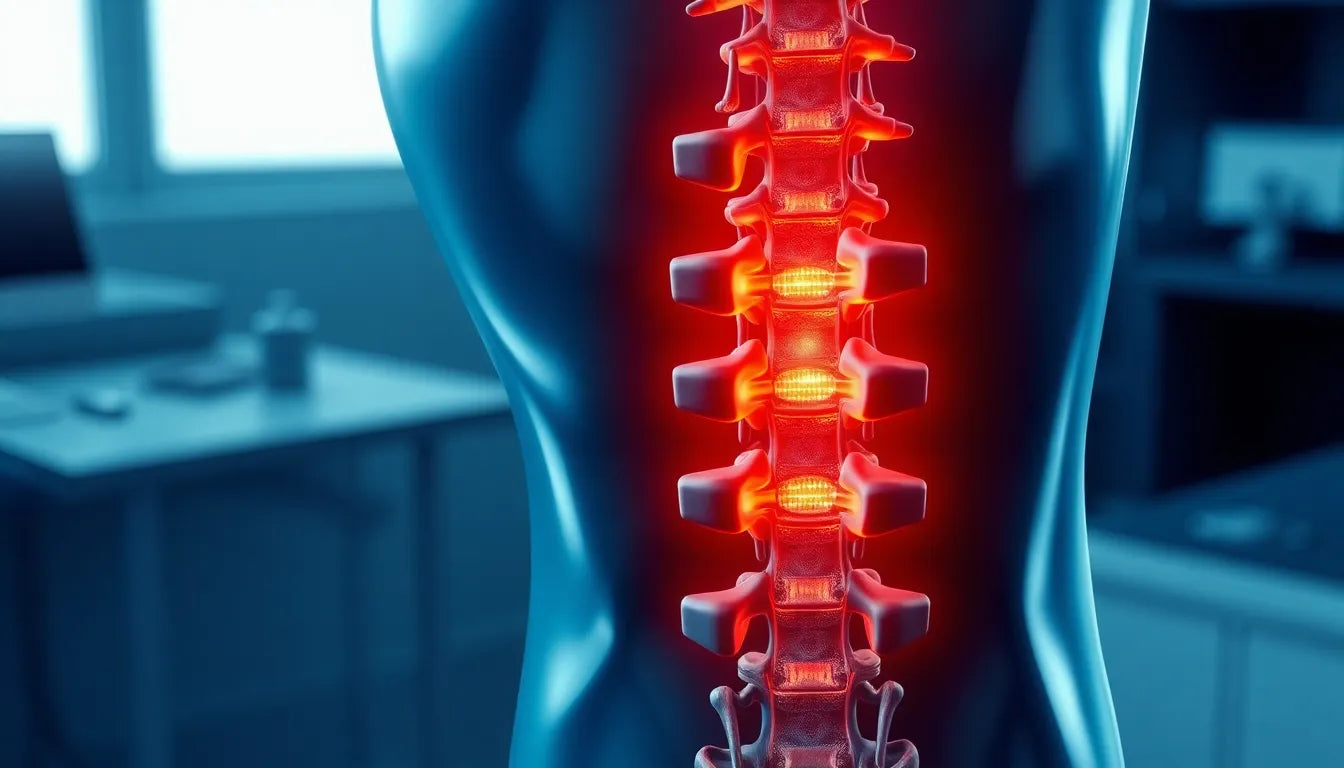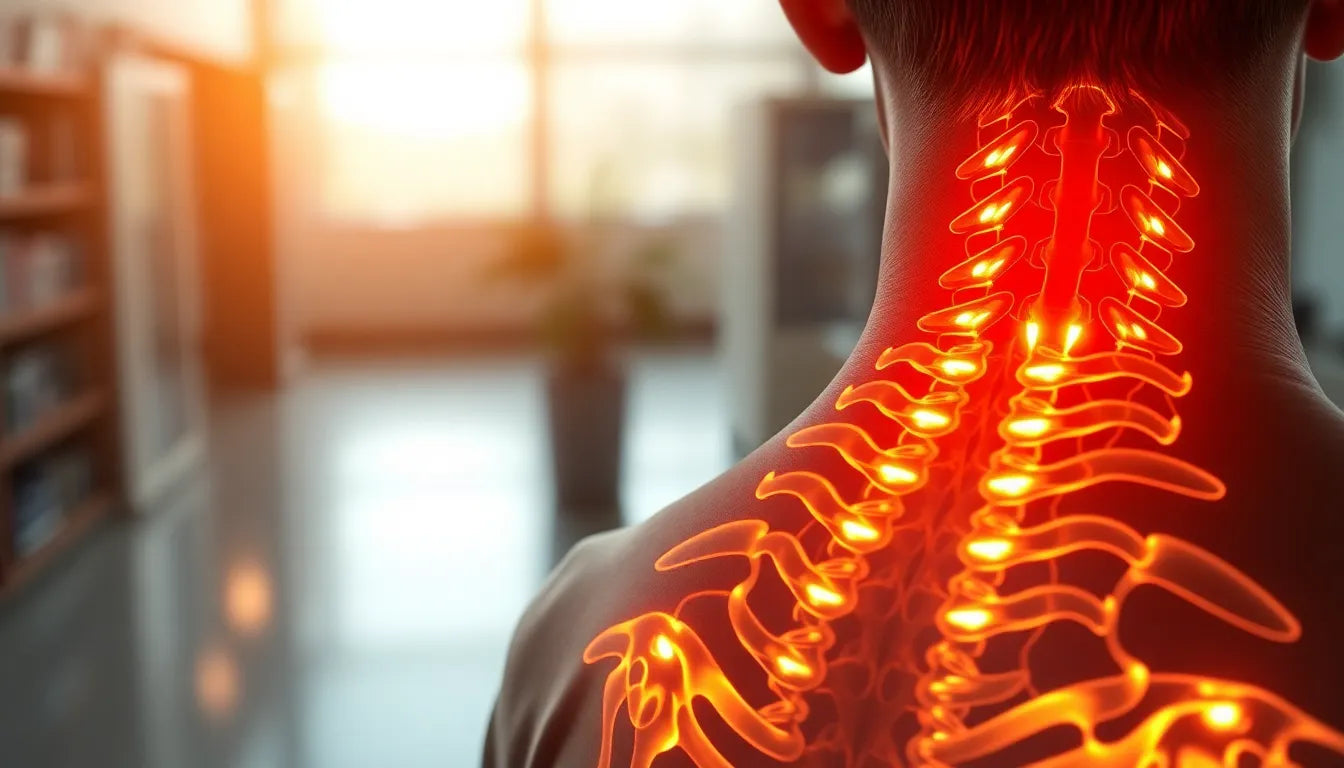Understanding the signs of a herniated disc is crucial for anyone experiencing back pain or related symptoms. A herniated disc occurs when the soft, gel-like center of a spinal disc pushes through a crack in its tougher exterior casing. This condition can occur anywhere along the spine but is most common in the lower back (lumbar region), although it can also affect the neck (cervical region). The symptoms of a herniated disc can vary widely, ranging from mild discomfort to severe pain and neurological issues, making early recognition and management essential.
Understanding herniated discs
A herniated disc is a prevalent condition that affects many individuals, particularly as they age. Discs act as cushions between the vertebrae in your spine, providing flexibility and shock absorption. When a disc herniates, it can press on nearby nerves, leading to a variety of symptoms. These symptoms can include sharp or shooting pain, numbness, or weakness in the limbs. It's important to note that some herniated discs may not cause any noticeable symptoms, while others can lead to significant discomfort and mobility issues.
Recognizing the symptoms of a herniated disc early is vital for effective management and recovery. Early detection can prevent the condition from worsening and help avoid further complications. In many cases, herniated discs can improve on their own with conservative treatment methods such as rest, physical therapy, and over-the-counter pain relievers. However, some cases may require more extensive medical intervention, including surgery.
The importance of early detection
Understanding the symptoms associated with a herniated disc is crucial for anyone experiencing back pain. Early detection allows for timely intervention, which can prevent further complications and lead to a more successful recovery. While some herniated discs resolve on their own, others may persist and require medical treatment. By being aware of the symptoms, individuals can seek appropriate care and avoid exacerbating their condition.
The goal of this article is to educate readers about the symptoms of a herniated disc and to provide guidance on when to seek professional help. By understanding what to look for, individuals can make informed decisions about their health and take proactive steps towards managing their condition. Whether you're experiencing mild discomfort or severe pain, knowing the signs of a herniated disc can empower you to take control of your health and seek the appropriate care when needed.
common symptoms of a herniated disc
Recognizing the symptoms of a herniated disc is crucial for early intervention and effective management. One of the most common indicators is pain, which can manifest in various ways depending on the location of the herniated disc. Many individuals experience sharp or shooting pain that radiates from the site of the herniation to other areas such as the back, buttocks, legs, or even arms. This pain often intensifies with specific movements, such as bending, twisting, or prolonged sitting, and can be exacerbated by actions like coughing or sneezing.
In addition to pain, neurological symptoms are also prevalent in those with a herniated disc. These symptoms can include numbness, tingling, or a feeling of pins and needles in the affected limbs. Weakness in the muscles is another common symptom, which may lead to difficulty in performing everyday tasks. Muscle spasms and reduced reflexes, particularly in the lower back or neck regions, are also indicative of a herniated disc. These neurological symptoms occur because the herniated disc can press on nearby nerves, disrupting normal nerve function.
pain distribution and its implications
The specific symptoms of a herniated disc can vary depending on its location within the spine. In the lumbar region (lower back), a herniated disc can cause pain that radiates down the legs, a condition commonly known as sciatica. This pain is often accompanied by numbness or tingling in the legs and feet, and it can significantly impact mobility and quality of life. Conversely, a herniated disc in the cervical region (neck) can lead to pain that radiates into the shoulders, arms, and hands, often accompanied by similar neurological symptoms.
To better understand the differences, consider the following table illustrating symptom patterns based on the location of the herniated disc:
| Location | Common Symptoms |
|---|---|
| Lumbar (Lower Back) | Pain in the lower back, buttocks, legs; sciatica; numbness/tingling in legs; muscle weakness |
| Cervical (Neck) | Pain in the neck, shoulders, arms; numbness/tingling in arms; muscle weakness |
severe and rare symptoms
While most symptoms of a herniated disc are manageable, there are severe and rare symptoms that require immediate medical attention. One such symptom is the loss of bladder or bowel control, which may indicate a serious condition known as cauda equina syndrome. This syndrome occurs when the herniated disc compresses the nerves at the base of the spinal cord, and it can lead to permanent nerve damage if not addressed promptly.
Other alarming symptoms include severe weakness or significant sensory loss in the limbs. These signs suggest substantial nerve compression and necessitate urgent medical evaluation. If you experience any of these severe symptoms, it is crucial to seek medical attention immediately to prevent further complications.
diagnosis and recovery
The diagnosis of a herniated disc typically involves a thorough medical history review and a physical examination by a healthcare professional. Imaging tests such as MRI, CT scans, or X-rays may be employed to confirm the diagnosis and assess the extent of the herniation. These tests help in determining the most appropriate treatment plan.
Recovery from a herniated disc varies from person to person, but most cases improve within 4–6 weeks with conservative management. This approach includes rest, over-the-counter pain relievers, and physical therapy to strengthen the muscles supporting the spine and improve flexibility. In some instances, ergonomic aids such as specially designed chairs and cushions can help alleviate pressure on the spine and prevent symptom aggravation.
By understanding the symptoms and seeking timely medical advice, individuals can effectively manage a herniated disc and improve their quality of life. Early detection and intervention are key to preventing further complications and ensuring a successful recovery.
Management and prevention tips for herniated discs
Managing a herniated disc effectively involves a combination of lifestyle adjustments and home remedies that can alleviate symptoms and prevent further issues. Proper posture is essential in reducing strain on the spine. When sitting, choose a chair with good lumbar support, and keep your feet flat on the ground. For sleeping, lying on your back with a pillow under your knees or on your side with a pillow between your legs can help maintain spinal alignment.
- Best positions for sitting and sleeping: Use ergonomic chairs and maintain a neutral spine position. For sleeping, consider a medium-firm mattress and supportive pillows to keep your spine aligned.
- Recommended stretches and exercises: Gentle stretching and strengthening exercises can support recovery. Focus on stretches that target the back and core, such as pelvic tilts and hamstring stretches.
- Use of ergonomic products: Ergonomic products like chairs, cushions, and lumbar supports can help reduce pressure on the spine and promote proper posture, aiding in symptom management.
When to seek medical attention
While many herniated discs improve with conservative management, certain symptoms warrant immediate medical attention. If you experience severe pain that does not improve with rest, numbness or weakness in the limbs, or loss of bladder or bowel control, it is crucial to consult a healthcare professional. Timely intervention can prevent further complications and ensure appropriate treatment.
Frequently Asked Questions
Can a herniated disc heal on its own?
Yes, most herniated discs can heal on their own with conservative management, such as rest, physical therapy, and over-the-counter pain relievers, typically within 4–6 weeks.
What activities should I avoid with a herniated disc?
It is advisable to avoid activities that exacerbate symptoms, such as heavy lifting, prolonged sitting, and movements that involve bending or twisting.
How is a herniated disc diagnosed?
A herniated disc is diagnosed through a combination of medical history, physical examination, and imaging tests like MRI, CT scans, or X-rays.
What are the warning signs of a serious issue?
Warning signs of a serious issue include loss of bladder or bowel control, significant weakness, or severe pain, which require immediate medical attention.
How can ergonomic products help?
Ergonomic products can alleviate pressure on the spine and improve posture, which aids in symptom management and prevention of further aggravation.
Sources
- Mayo Clinic. "Herniated Disk: Symptoms & Causes."
- Cleveland Clinic. "Herniated Disk."
- NCBI Bookshelf (StatPearls). "Herniated Disc."
- NewYork-Presbyterian. "Herniated Disc Symptoms."
- MedlinePlus. "Herniated Disk."
- Harvard Health. "Herniated Disk."
- Johns Hopkins Medicine. "Lumbar Disc Disease (Herniated Disc)."


















